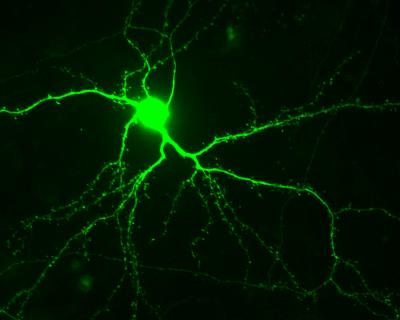Nitric oxide, a gaseous molecule produced in the brain, can damage neurons. When the brain produces too much nitric oxide, it contributes to the severity and progression of stroke and neurodegenerative diseases such as Alzheimer’s. Researchers at Sanford-Burnham Medical Research Institute recently discovered that nitric oxide not only damages neurons, it also shuts down the brain’s repair mechanisms. Their study was published by the Proceedings of the National Academy of Sciences.
“In this study, we’ve uncovered new clues as to how natural chemical reactions in the brain can contribute to brain damage, loss of memory and cognitive function, in a number of diseases,” said Stuart A. Lipton, M.D., Ph.D., director of Sanford-Burnham’s Del E. Webb Neuroscience, Aging, and Stem Cell Research Center and a clinical neurologist.
Lipton led the study, along with Sanford-Burnham’s Tomohiro Nakamura, Ph.D., who added that these new molecular clues are important because “we might be able to develop a new strategy for treating stroke and other disorders if we can find a way to reverse nitric oxide’s effect on a particular enzyme in nerve cells.”

Nitric oxide inhibits the neuroprotective ERK1/2 signaling pathway
Learning and memory are in part controlled by NMDA-type glutamate receptors in the brain. These receptors are linked to pores in the nerve cell membrane that regulate the flow of calcium and sodium in and out of the nerve cells. When these NMDA receptors get over-activated, they trigger the production of nitric oxide. In turn, nitric oxide attaches to other proteins via a reaction called S-nitrosylation, which was first discovered by Lipton and colleagues. When those S-nitrosylated proteins are involved in cell survival and lifespan, nitric oxide can cause brain cells to die prematurely—a hallmark of neurodegenerative disease.
In their latest study, Lipton, Nakamura and colleagues used cultured neurons as well as a living mouse model of stroke to explore nitric oxide’s relationship with proteins that help repair neuronal damage. They found that nitric oxide reacts with the enzyme SHP-2 to inhibit a protective cascade of molecular events known as the ERK1/2 signaling pathway. Thus, nitric oxide not only damages neurons, it also blocks the brain’s ability to self-repair.
Notes about this neurology research article
This research was funded by the U.S. National Institutes of Health grants R01EY05477, P01HD29687, P01ES016738 and P30NS076411.
Written by Heather Buschman, Ph.D
Contact: Heather Buschman, Ph.D – Sanford-Burnham Medical Research Institute
Source: Sanford-Burnham Medical Research Institute press release
Image Source: Image adapted from Sanford-Burnham Medical Research Institute press release.
Original Research: Abstract for “S-nitrosylated SHP-2 contributes to NMDA receptor-mediated excitotoxicity in acute ischemic stroke” by Zhong-Qing Shi, Carmen R. Sunico, Scott R. McKercher, Jiankun Cui, Gen-Sheng Feng, Tomohiro Nakamura, and Stuart A. Liptona in Proceedings of the National Academy of Sciences. Published online February 4 2013 doi: 10.1073/pnas.1215501110







